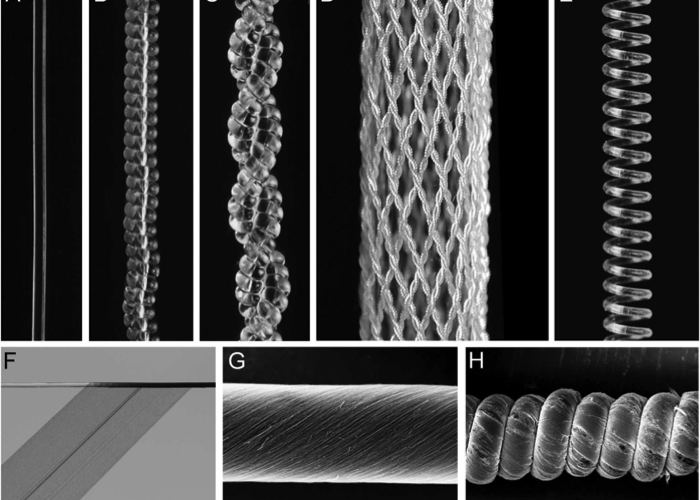 Carter S. Haines1, Márcio D. Lima1, Na Li1, Geoffrey M. Spinks2, Javad Foroughi2, John D. W. Madden3, Shi Hyeong Kim4, Shaoli Fang1, Mônica Jung de Andrade1, Fatma Göktepe5, Özer Göktepe5, Seyed M. Mirvakili3, Sina Naficy2, Xavier Lepró1, Jiyoung Oh1, Mikhail E. Kozlov1, Seon Jeong Kim4, Xiuru Xu1,6, Benjamin J. Swedlove1, Gordon G. Wallace2, Ray H. Baughman1,*
Carter S. Haines1, Márcio D. Lima1, Na Li1, Geoffrey M. Spinks2, Javad Foroughi2, John D. W. Madden3, Shi Hyeong Kim4, Shaoli Fang1, Mônica Jung de Andrade1, Fatma Göktepe5, Özer Göktepe5, Seyed M. Mirvakili3, Sina Naficy2, Xavier Lepró1, Jiyoung Oh1, Mikhail E. Kozlov1, Seon Jeong Kim4, Xiuru Xu1,6, Benjamin J. Swedlove1, Gordon G. Wallace2, Ray H. Baughman1,*
1The Alan G. MacDiarmid NanoTech Institute, University of Texas at Dallas, Richardson, TX 75083, USA.
2Intelligent Polymer Research Institute, ARC Centre of Excellence for Electromaterials Science, University of Wollongong, Wollongong, New South Wales 2522, Australia.
3Department of Electrical and Computer Engineering and Advanced Material and Process Engineering Laboratory, University of British Columbia, Vancouver, British Columbia V6T 1Z4, Canada.
4Center for Bio-Artificial Muscle and Department of Biomedical Engineering, Hanyang University, Seoul 133-791, South Korea.
5Department of Textile Engineering, Çorlu Engineering Faculty, Namık Kemal University, Çorlu-Tekirdağ, Turkey.
6Alan G. MacDiarmid Institute, Jilin University, Changchun 130012, China.
*Corresponding author.E-mail: ray.baughman@utdallas.edu.
원문 링크 : http://www.sciencemag.org/content/343/6173/868.short
Abstract
The high cost of powerful, large-stroke, high-stress artificial muscles has combined with performance limitations such as low cycle life, hysteresis, and low efficiency to restrict applications. We demonstrated that inexpensive high-strength polymer fibers used for fishing line and sewing thread can be easily transformed by twist insertion to provide fast, scalable, nonhysteretic, long-life tensile and torsional muscles. Extreme twisting produces coiled muscles that can contract by 49%, lift loads over 100 times heavier than can human muscle of the same length and weight, and generate 5.3 kilowatts of mechanical work per kilogram of muscle weight, similar to that produced by a jet engine. Woven textiles that change porosity in response to temperature and actuating window shutters that could help conserve energy were also demonstrated. Large-stroke tensile actuation was theoretically and experimentally shown to result from torsional actuation.